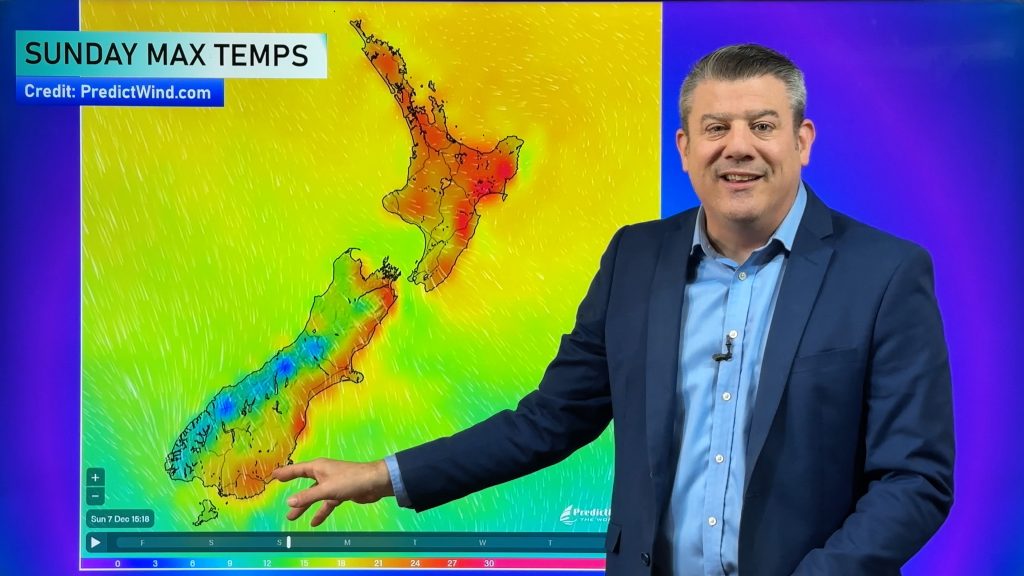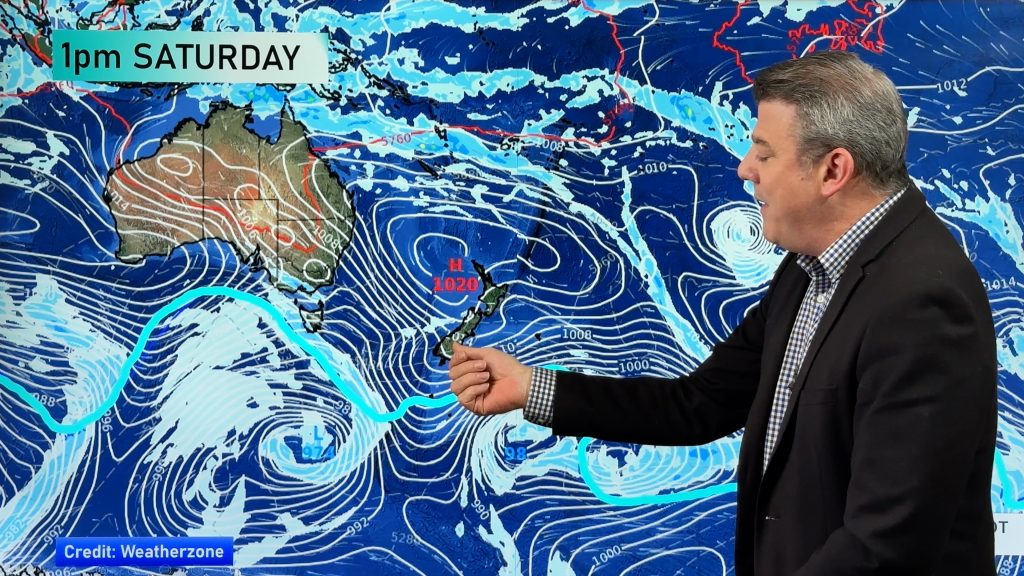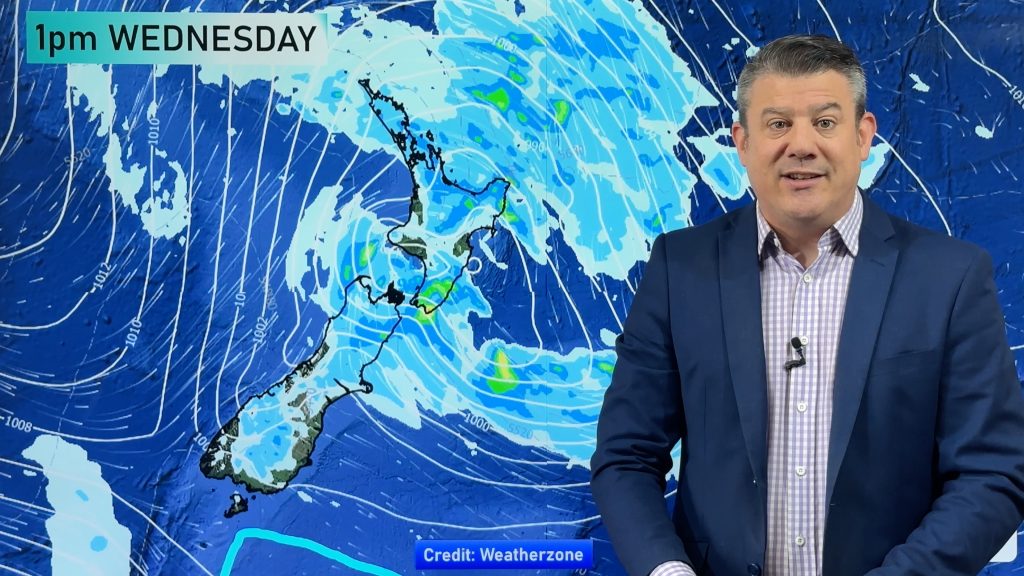
> From the WeatherWatch archives
The numbers are in and they confirm we all pretty much already knew. It was a very warm December.
The very common and almost ubiquitous north to northwest flow kept temperatures up last month. Much of the North Island, the Nelson area and parts of the eastern South Island saw temperatures at least 1.2°C above average. Along with this, several December temperature records were broken.
Here’s a look at the record and near-record temperatures from December. All data is from NIWA.
Record or near-record mean air temperatures for December were recorded at:
|
Location |
Mean temp. (oC) |
Departure from normal (oC) |
Year records began |
Comments |
|
Kaikohe |
19.1 |
1.9 |
1973 |
Highest |
|
Whangaparaoa |
18.8 |
0.9 |
1982 |
4th-highest |
|
Tauranga Aero |
19.4 |
1.4 |
1913 |
2nd-highest |
|
Te Puke |
18.4 |
1.4 |
1973 |
4th-highest |
|
Auckland Aero |
19.6 |
1.3 |
1959 |
3rd-highest |
|
Dannevirke |
17.7 |
1.7 |
1951 |
3rd-highest |
|
Waione |
18.5 |
1.2 |
1991 |
4th-highest |
|
Ngawi |
18.4 |
1.1 |
1972 |
4th-highest |
|
Hicks Bay |
18.3 |
1.1 |
1969 |
4th-highest |
|
Gisborne |
19.4 |
1.3 |
1905 |
4th-highest |
|
Hastings |
19.8 |
2.0 |
1965 |
2nd-highest |
|
Waipawa |
18.4 |
1.8 |
1945 |
Highest |
|
Mahia |
17.8 |
0.9 |
1990 |
3rd-highest |
|
Palmerston North |
18.1 |
1.7 |
1991 |
2nd-highest |
|
Ohakune |
16.7 |
2.7 |
1962 |
Highest |
|
Wanganui |
17.8 |
1.2 |
1987 |
4th-highest |
|
Takaka |
17.6 |
1.6 |
1978 |
3rd-highest |
|
Nelson |
18.0 |
1.4 |
1943 |
3rd-highest |
|
Kaikoura |
16.7 |
1.3 |
1963 |
4th-highest |
|
Cheviot |
16.8 |
1.7 |
1982 |
2nd-highest |
|
Le Bons Bay |
15.6 |
1.9 |
1984 |
3rd-highest |
Record or near-record daily maximum air temperatures for December were recorded at:
|
Location |
Extreme maximum (°C) |
Date of occurance |
Year records began |
Comments
|
|
Kaikohe |
28.1 |
19th |
1973 |
Highest |
|
Whakatane Aero |
28.8 |
3rd |
1975 |
Equal 4th-highest |
|
Port Taharoa |
31.4 |
24th |
1973 |
Highest |
|
Te Kuiti |
29.3 |
24th |
1959 |
2nd-highest |
|
New Plymouth |
29.9 |
24th |
1944 |
Highest |
|
Dannevirke |
29.4 |
26th |
1951 |
3rd-highest |
|
Waione |
31.6 |
26th |
1991 |
2nd-highest |
|
Martinborough |
31.3 |
25th |
1986 |
Highest |
|
Ngawi |
30.0 |
25th |
1972 |
Highest |
|
Paraparaumu Aero |
29.2 |
24th |
1953 |
Equal highest |
|
Palmerston North |
30.8 |
26th |
1991 |
Highest |
|
Levin |
29.7 |
25th |
1895 |
Highest |
|
Wellington Aero |
29.6 |
25th |
1962 |
Highest |
|
Wallaceville |
29.3 |
25th |
1939 |
Highest |
|
Stratford |
26.8 |
25th |
1960 |
2nd-highest |
|
Hawera |
25.5 |
26th |
1977 |
Equal highest |
|
Ohakune |
29.0 |
25th |
1962 |
Highest |
|
Wanganui |
29.5 |
24th |
1937 |
3rd-highest |
|
Wanganui |
29.7 |
24th |
1987 |
Highest |
|
Takaka |
30.5 |
24th |
1978 |
Highest |
|
Farewell Spit |
26.8 |
25th |
1971 |
2nd-highest |
|
Reefton |
32.2 |
24th |
1960 |
Highest |
|
Motueka, Riwaka |
31.9 |
25th |
1956 |
Highest |
|
Appleby |
29.1 |
24th |
1943 |
4th-highest |
|
Nelson |
30.3 |
24th |
1943 |
Highest |
|
Hanmer Forest |
32.0 |
25th |
1906 |
4th-highest |
|
Cheviot |
31.9 |
17th |
1982 |
2nd-highest |
|
Le Bons Bay |
28.8 |
17th |
1984 |
4th-highest |
|
Ranfurly |
31.1 |
25th |
1975 |
3rd-highest |
|
Manapouri Aero |
28.3 |
24th |
1963 |
4th-highest |
|
Lumsden |
28.8 |
25th |
1982 |
3rd-highest |
|
Lauder |
32.5 |
25th |
1924 |
4th-highest |
|
Alexandra |
33.2 |
25th |
1983 |
3rd-highest |
|
Gore |
29.0 |
25th |
1971 |
Equal highest |
The rest of the country saw temperatures that were above average, but not quite as warm. The temperatures were between 0.5 and 1.2°C above average.
According to NIWA, the nation-wide average temperature in December 2012 was 16.7°C (1.1°C above the 1971-2000 December average), using their seven-station temperature series which began in 1909.
The hottest temperature observed in December was 34.5°C, observed at Gisborne on 19 December while the lowest temperature was -1.7°C at Motu on 1 December.
By WeatherWatch.co.nz and NIWA
Comments
Before you add a new comment, take note this story was published on 8 Jan 2013.





Add new comment
Peter of Dunedin on 8/01/2013 4:31am
Where are Christchurch,Oamaru,Dunedin and Invercargill to name a significant few? If they are locations that did not experience so called record or near record highs then it puts a question mark around the presented data.Skews it in favour of the presented statement. A fairer and more relevant assessment would be drawn if all locations throughout the country were presented. It would allow the reader to draw there own conclusions. The way it is presently presented is an example of the ” dumbing down” that is so crassly presented to nowadays!
Reply